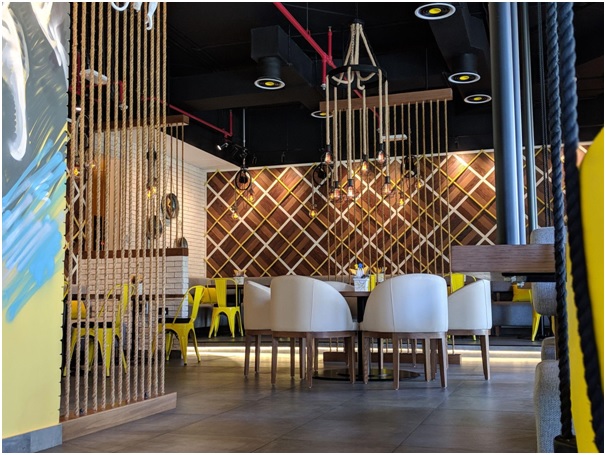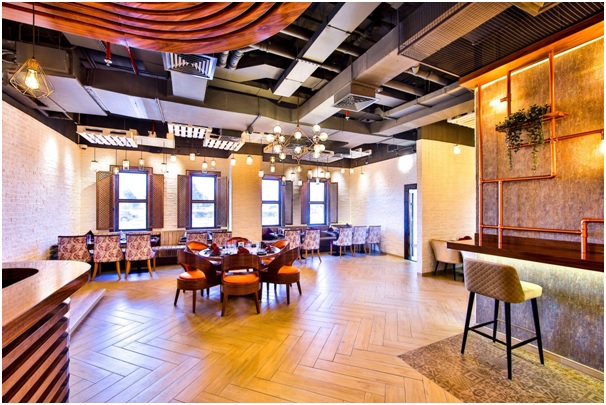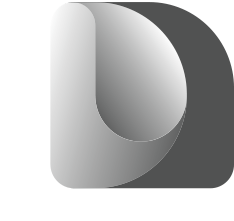Real Restaurant Kitchen Designs to Inspire Your New Concept
- DNL GROUP
- June 5, 2023
There are numerous considerations to make. No two restaurant facilities are identical, especially when comparing full-service, quick-service, etc. restaurants. However, there are several factors that should be considered in any back-
Here are the top ten:
- Flexibility & Space Efficiency
- Simpleness
- Kitchen Workflow
- Food Sanitation & Food Safety
- Supervision & Training
- Energy Efficiency
- Air Ventilation
- Maintenance
- Commercial Kitchen Equipment
- Technology that restaurant points of sale in the front of the house

1. Adaptability and space effectiveness
The kitchen should be just as adaptable as the menu. Does your interior for a restaurant in Dubai offer specials daily? With menu engineering data at your side, do you alter your menu seasonally? Having a modular kitchen – with equipment on wheels or workstations that can be used for multiple duties – will allow you to make better use of the space.
2. Simpleness
How can you simplify your kitchen so that a chimpanzee could prepare your meals?
Your kitchen shouldn’t be difficult to traverse, even though it can violate the health codes we mentioned earlier.
Save space (and money) by utilizing only the necessary equipment, and place stations in a manner that facilitates the kitchen’s workflow, from expo to line cook to executive chef.
3. Kitchen Workflow
Most kitchens are disorganized. It is the essence of a kitchen and the excitement of being a chef. Chris Hill discusses this surge in the podcast The Garnish. The finest kitchens, however, utilize this disorder to their advantage.
DNL designs suggest designing your kitchen with functional zones for cleaning, storage, food preparation, meal preparing, and service. In this design, the refuse disposal and cleaning area is far from the food preparation area, and finished meals leave the kitchen on one side while dirty dishes enter on the other.

4. Food Hygiene and Food Safety
According to DNL designs, designing a restaurant kitchen with insufficient wash stations is one of the biggest errors that can be made. “When planning the size of drain boards, racks, and landing tables, consider the amount of silverware, dishes, glasses, and trays that will accumulate on your busiest day, as well as the capacity of your dishwashers.”
Every section of the kitchen should emphasize food safety and health regulations. While the cooking and preparation areas can be the most enjoyable aspect of designing a kitchen, the cleaning stations are equally essential. Consider where you will stack dirty dishes and where you will position clean dishes so that they are easily accessible when plating food.
5. Supervision and Instruction
There should be space for the executive chef to supervise (and train) line cooks, sous chefs, and other back-of-house employees in the kitchen. Creating an incentive program for promotion in the back of the house is crucial, as hiring (and retaining) excellent restaurant staff is the top concern for over half of the restaurateurs surveyed for the 2019 Restaurant Success Report. The kitchen layout should provide sufficient space for the executive chef to monitor all operations.
6. Energy Performance
Commercial kitchens are extremely energy intensive. In reality, a significant portion of your restaurant’s budget can be allocated to energy expenditures. According to Foodservice Equipment & Supplies, “placing cooking equipment so that the exhaust hood can whisk away hot air keeps the kitchen cooler, and placing cold storage as far away from heat sources as possible prevents appliances from working overtime.”
7. Ventilation of Air
In the same vein as energy efficiency, air ventilation must be considered. If the kitchen is not adequately ventilated, the indoor air quality, including aromas and air circulation, will suffer. Turn on the range fan when your chefs begin cooking, not halfway through, and frequently replace the filter in the range hood. As the rear of the house can become quite warm, you can also want to include fans or air purifiers in your restaurant kitchen’s floor plan.

8. Maintenance
What is the most common error in designing a commercial kitchen? Not providing room for maintenance. Imagine that your oven breaks down three months after it has been installed. If the repairman cannot assess the damage because other appliances or countertops are in the way, you can need to purchase a new oven. Probably not within your budget!
Plan for the worst by designing your kitchen to be modular, allowing you to relocate certain areas to gain access to equipment that can malfunction, such as refrigerators, walk-in coolers, and ranges.
9. Commercial kitchen appliances
Here is a list of all the restaurant equipment, whether possessed or leased, that you would need for your restaurant kitchen. Again, this is dependent upon the precise items on your menu.
- Range
- Oven Grill
- Deep fryer
- Reach-in chiller or walk-in refrigerator
- Freezer (upright or walk-in)
- Sauté pans, saucepans, baking dishes
- Stock/soup vessels
- Baking trays
- Pizza displays, pizza paddles
- Tongs, spatulas, ladles
- Kitchen utensils
- Serving bowls and mixing containers
- The steam table.
- Plates containing entrées, appetizers, and desserts.
- Cleaning cloths and cleaning pails
- Rubber floor coverings
- Hand soap/sanitizer dispenser
- Firefighting Device
10. Technology
Your back-of-house technology should also be modular, flexible, and user-friendly. In numerous establishments, paper tickets or chits are posted to the kitchen. With custom routing preferences to prep stations, ticket and fulfillment time reports, and integrations with online ordering systems, however, kitchen display screens can maximize accuracy and increase the number of tickets your kitchen can serve.

